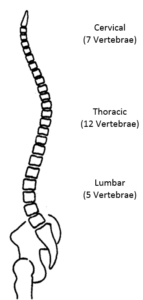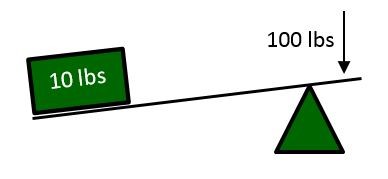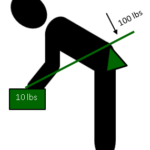Basics of the Spine
The human spine consists of 24 bones and is broken down into 3 curvatures – cervical, thoracic and lumbar. These curvatures are designed to help minimize stress on the spine and provide protection and support for the spinal cord. Discs which lie between each vertebrae within the spine act as shock absorbers.
Although the lumbar section of the spine is often the most injured area of the spine, the cervical and thoracic areas of the spine are also susceptible to injury. Awkward postures accompanied with forceful exertion increase the risk for injury, especially when these are repeated or sustained for extended durations.
When the spine is “neutral” (the curves are maintained) the spine is in the most ideal and strongest position/posture. If the spine is not positioned with its natural curves maintained, whether from poor posture, heavy lifting or any other number of factors, the discs, ligaments, tendons and musculature are compromised. This can also increase the compressive forces on the discs within the spine. This can lead to injury.


Think of the spine as a lever. When the fulcrum is in the middle, the same amount of weight on each side is equal to keep the lever straight. When the fulcrum is off center, the amount of weight/force needed to offset the same weight is increased.
The spine operates on the same 10 to 1 ratio. For example, when lifting a 10 lbs. object, it puts 100 lbs. of pressure on the spine. When lifting more weight and combining that with the weight of the upper torso, the compressive forces on the spine are increased further. This is a simple example of why lifting technique is important but also shows the importance of trying to prevent injuries by avoiding the lift whenever feasible.

Contact CSU Ergonomics
(970) 491-2724
